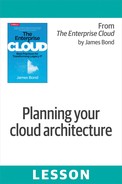Book Description
Before undertaking any transition to cloud computing, it is important to understand its basic fundamentals and how information technology has evolved up to this point. This covers covers the fundamentals of cloud computing, including the transformation from traditional IT and the definitions and characteristics of cloud computing. It also includes examples of cloud service architectures and an analysis and comparison of different cloud deployment models.
